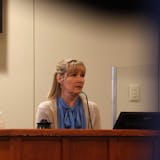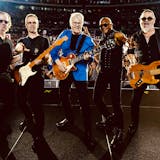Kirsten Johansen was puzzled when she went to cast her ballot on the first day of early voting and was told by an election worker that her registration had been challenged.
“I was shocked,” said Johansen, an Edina resident, who hasn’t moved and recently cast a ballot in the May special election for Hennepin County commissioner. She figured double-checking her registration for the general election was unnecessary.
“I thought, of course I’m registered, I just voted a couple of months ago,” she said. “I got there and the woman said, ‘Sorry, it appears you’re a challenged voter.’”
Johansen said she doesn’t know why her registration was challenged. It didn’t happen to two other members of her household.
Johansen is among a small group whose voter registrations are challenged each year because of a discrepancy in data the state collects and analyzes to ensure the voter rolls are accurate. Big jumps in registrations around important elections can lead to more challenged voters.
Minnesota election officials routinely compare voter registrations with data they receive from other state and federal databases such as Driver and Vehicle Services, the Social Security Administration, the Department of Health and court records, said Secretary of State Steve Simon.
Typically, a registration is challenged because a postal verification card sent to a voter’s home is returned as undeliverable. But it can also happen if someone doesn’t vote for four years, they move, show up registered somewhere else, the courts deem them ineligible for some reason or for other less common reasons.
“Challenged status is a constant churn,” Simon said. “They are either removed or added, depending on the information that we get.”



